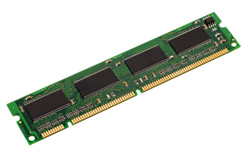Improving the nuts and bolts of consumer electronics
Technology progresses at mostly a frenetic pace. Nowhere is this more true than the semiconductor industry. Maintaining Europe's position at the forefront of this important sector requires significant investment in related research and development. The 'Rare earth oxide atomic layer deposition for innovation in electronics' (Realise) project was granted EU funding to advance atomic layer deposition (ALD). The objective was to use ALD to create extremely thin, on the scale of nanometres, films of rare earth elements on suitable substrates. Rare earth elements offer the advantage of very high permittivity, something rare indeed in the semiconductor field. Successful experiments in the laboratory eventually led to the creation of a commercially viable prototype. The new process was then applied to produce a variety of memory chips and capacitors. Members of the Realise consortium benefited greatly from their participation in the project. Expertise was developed locally, while innovation was protected through several patents and the research community was engaged through a number of conferences and publications.







